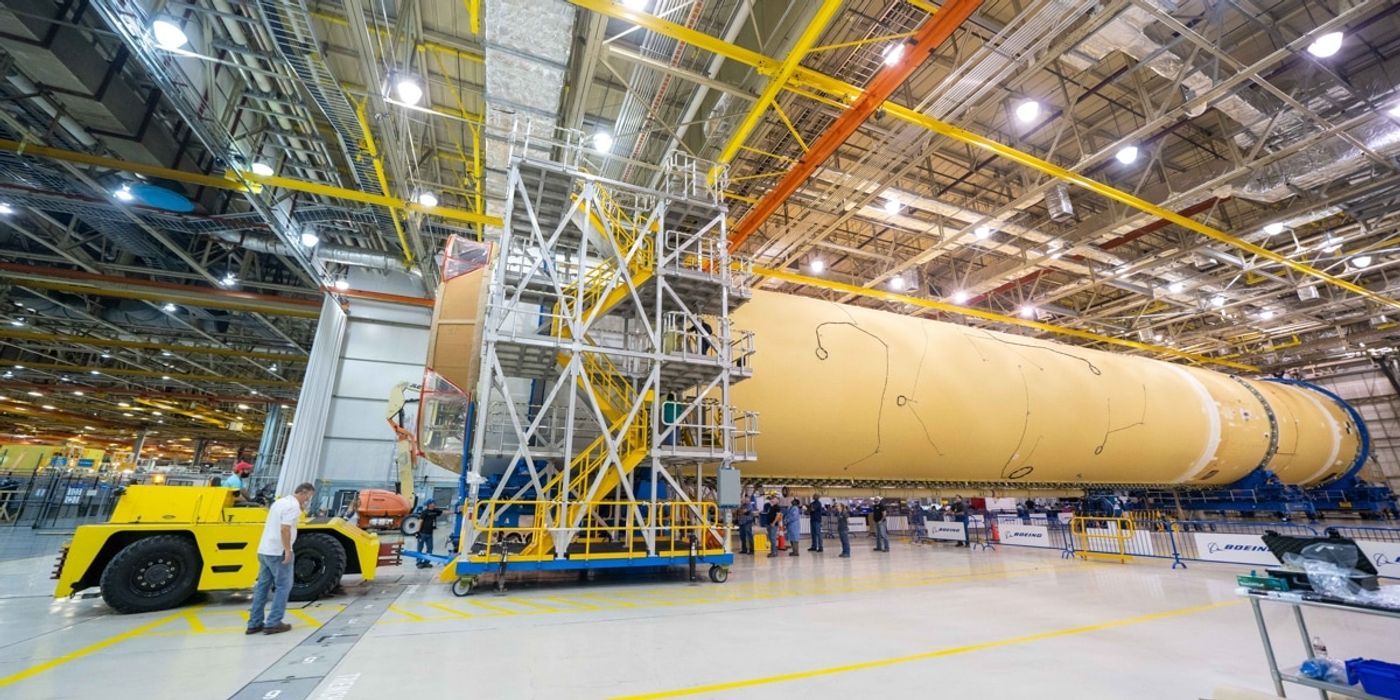NASA Assembles Final Sections of SLS Rocket Stage
NASA’s upcoming Space Launch System (SLS) rocket has seen delays time and time again due to several miscellaneous financial and manufacturing quandaries, but in a spark of good news just this past week, engineers with the American space agency have made significant progress on the project after assembling all the main structural components of the rocket stage.
Image Credit: NASA/Steven Seipel
“NASA has achieved a historic first milestone by completing the final join of the core stage structure for NASA’s Space Launch System, the world’s most powerful rocket,” commented Julie Bassler, the acting rocket stage manager for NASA’s SLS project.
The assembly of the SLS rocket stage brings the project one step closer to fruition, but it’s far from finished. The next steps will involve attaching all four of the SLS rocket’s RS-25 engines, which were originally used by NASA’s now-retired space shuttle orbiter. Once they’re attached, NASA will follow up with various tests to ensure proper working order.
“Now, to complete the stage, NASA will add the four RS-25 engines and complete the final integrated avionics and propulsion functional tests,” Bassler continued. “This is an exciting time as we finish the first-time production of the complex core stage that will provide the power to send the Artemis I mission to the Moon.”
Related: NASA publicly acknowledges SLS rocket development issues
Citing NASA’s official public statement regarding the matter, each of the SLS rocket’s components are bolted together with heavy-duty hardware. The final piece to be attached was the engine section, which will serve as the point of contact for the core stage’s four RS-25 engines.
After the engines are attached, NASA will purportedly transport the core stage to the Mississippi-based Stennis Space Center, where the core stage can then be installed inside of the B-2 Test Stand for testing. There, engineers will fully fuel the rocket and ensure that the complex fuel system and powerful engines work as expected.
Once completed, this rocket will become a key player in NASA’s upcoming Artemis-I mission, which will be the uncrewed maiden flight of the space agency’s SLS platform paired with the Orion spacecraft. Not only will this flight prove the SLS rocket’s capabilities, but it will prepare NASA for the Artemis-II mission, which will fly living astronauts to orbit around the Moon.
“NASA and our contractor teams are making tremendous progress on every aspect of manufacturing, assembling and testing the complex systems needed to land American astronauts on the lunar surface by 2024,” Bassler said. “I am confident this hard work will result in a rocket that can provide the backbone for deep space transportation to the Moon and ultimately to Mars.”
Related: Everything you need to know about NASA's Artemis missions
Assuming everything goes according to plan, NASA may put astronauts on the lunar surface again by 2024, opening the door to lunar colonization and deep space travel for future generations.
It should be interesting to see how everything pans out. If anything's certain, it's that all the lessons learned during the assembly of the first SLS rocket should make building the second, third, and so on of the SLS rocket platform much faster and more efficient on NASA's end.
Source: NASA









